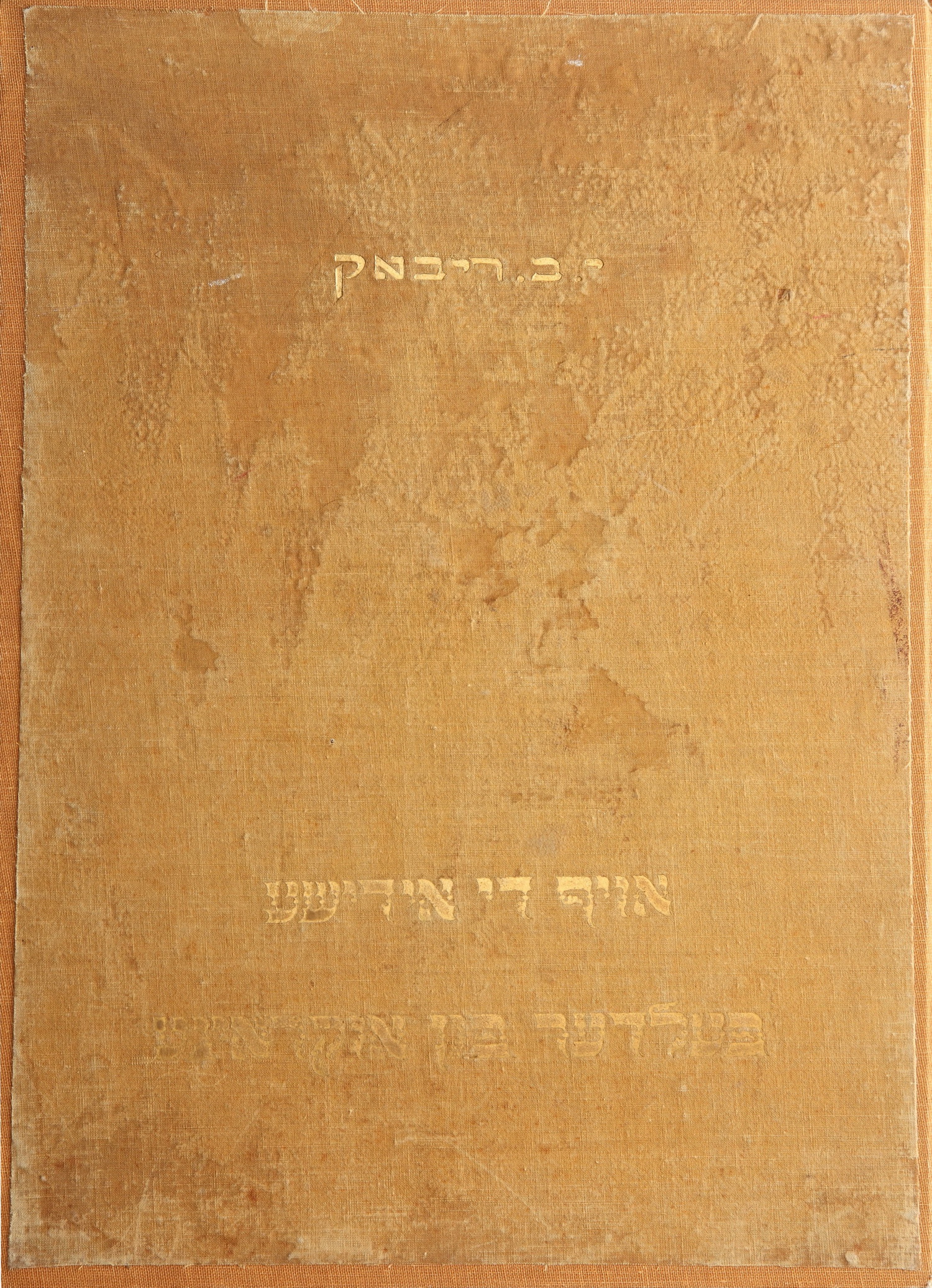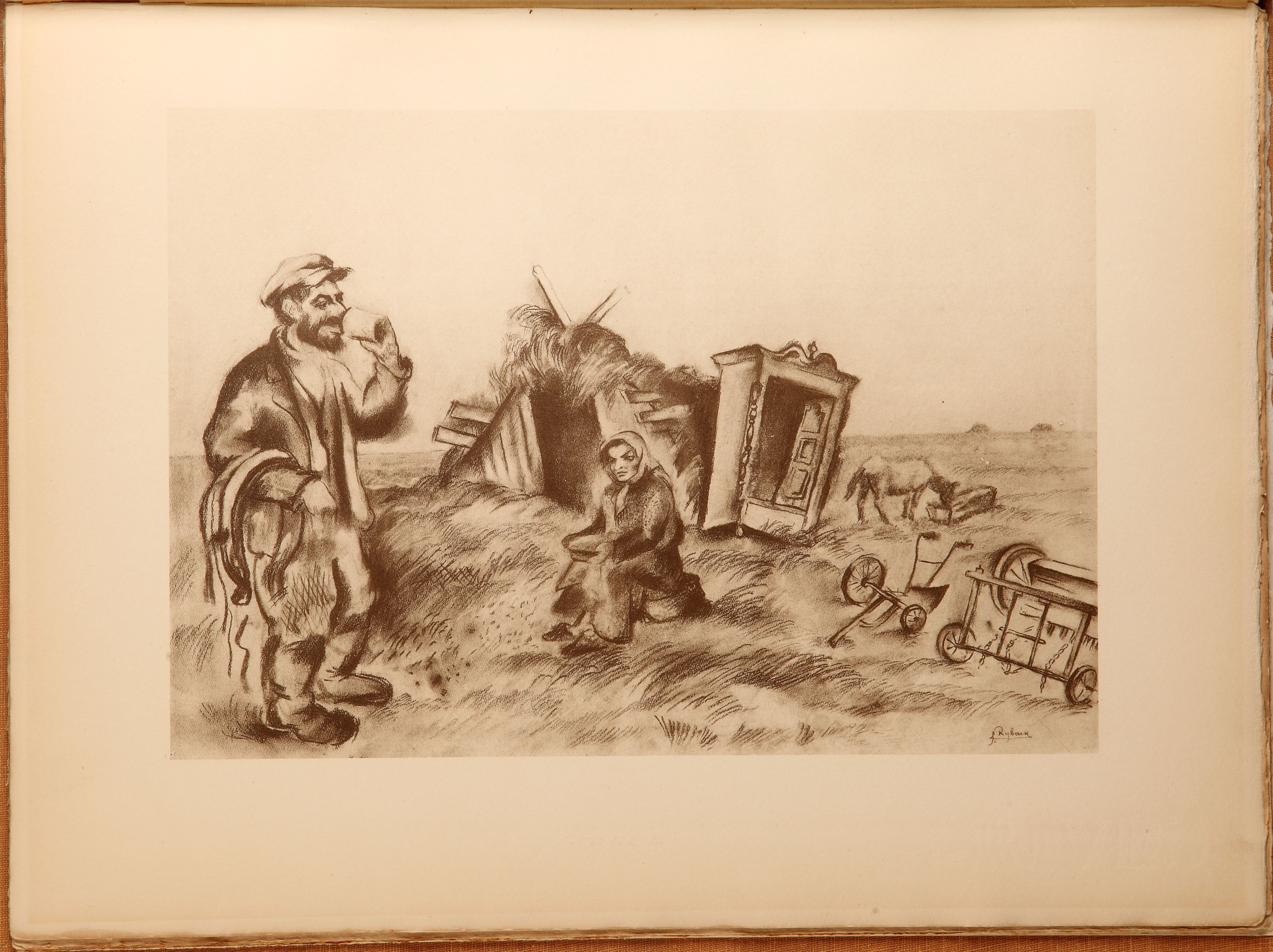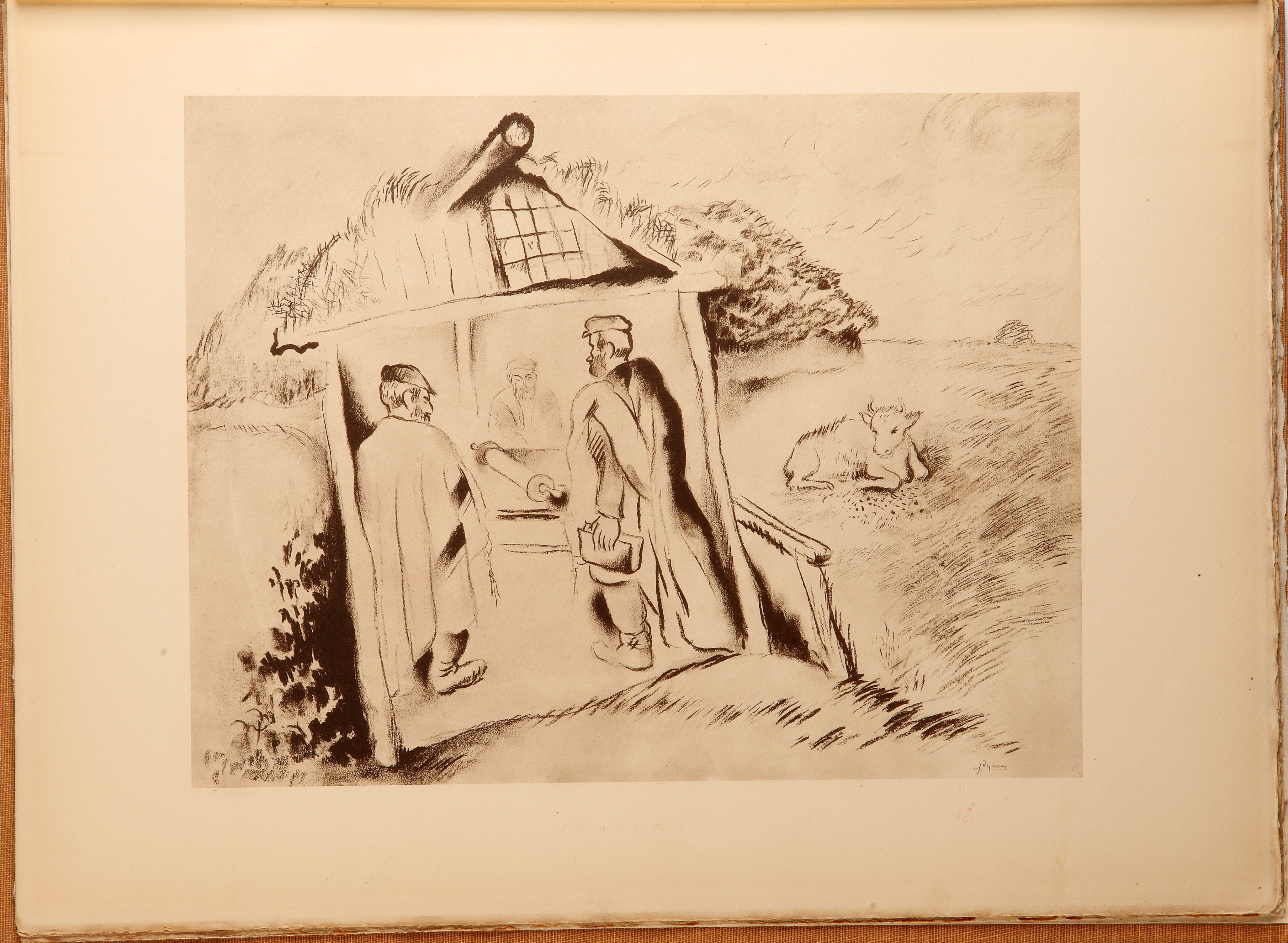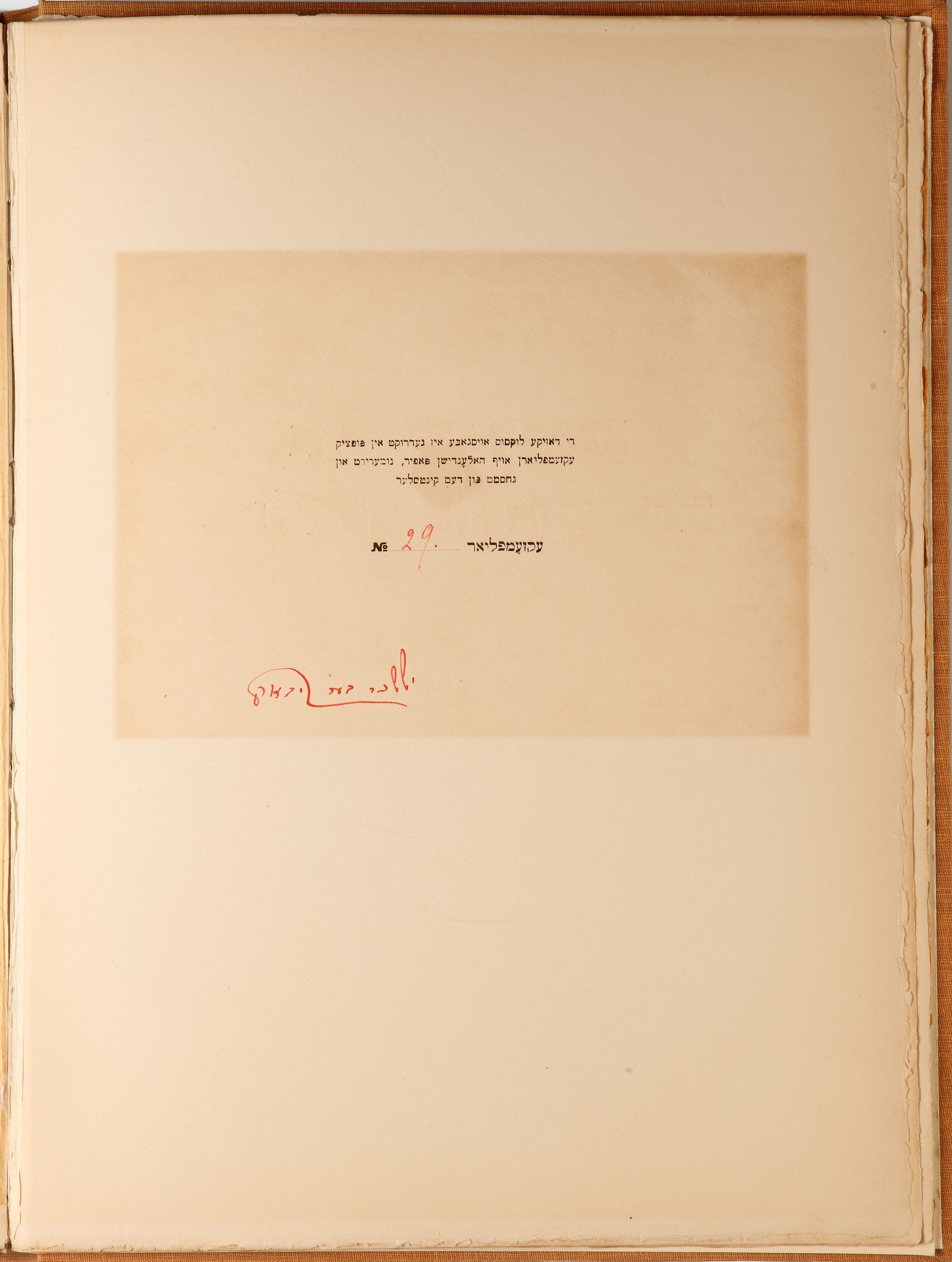


Jewish agricultural colonization in the USSR .. The sequel
Issachar Ber Ryback: «Evening Mood» and «Synagogue in the Barrack». Album of lithographs «On the Jewish Fields of Ukraine» (1926).
The graphic album «On the Jewish Fields of Ukraine», published in Paris in 1926, resulted from a two-month journey by Issachar Ber Ryback through the Jewish colonies of Kherson region and Crimea in the summer of 1925.
Before his brief return to the Soviet Union, the artist spent three years in Berlin, where he, besides participating in modernist associations, worked with promotional materials design for ORT. This charity was dedicated to providing Eastern European Jews with the skills and equipment needed to work in industry and agriculture. Collaboration with ORT allowed Ryback an insight into the process of agricultural colonization taking place in the USSR and likely sparked in him the interest in seeing the experiment with his own eyes.
In previous lithographic albums, such as «Shtetl. My destroyed home: a Memory (1923)», Ryback sought to convey the experience of Jewish life in the shtetl through a specific formal vocabulary. Dark tones, expressionistic distortion of figures, and a violation of traditional perspective created gloomy images based on the ever-present threat of pogroms. In contrast, the idea of the Jewish rebirth on soil, proposed in the Paris album, relied on soft strokes, a high-key tone, and greater naturalism.
One of the most interesting features in this album concerns the transition from the old world to the new, as the settlers brought with them a heritage of material culture that did not easily fit into their new surroundings. The lithograph titled «Evening Mood» synthesizes this opposition in the motif of a broken wardrobe in the open air, an object brought from the shtetl by the owners unaware that it would not fit into the modest huts of the Crimean steppe. A similar manifestation of the shtetl in the world of Soviet Jewry can be seen in the sheet «Synagogue in the Barracks», a rare image for the period of state atheism. Alluding to the conventional interpretation of space characteristic of the «Shtetl» series, the artist presents an improvised synagogue as a fragile repository of tradition in the middle of the fields.
The album «On the Jewish Fields of Ukraine» was published in a total print run of 300 copies in three languages (Yiddish, English, and French). It is worth noting that the collection of the Museum of Jewish History in Russia holds one of the few signed numbered copies in Yiddish with color lithographs.




